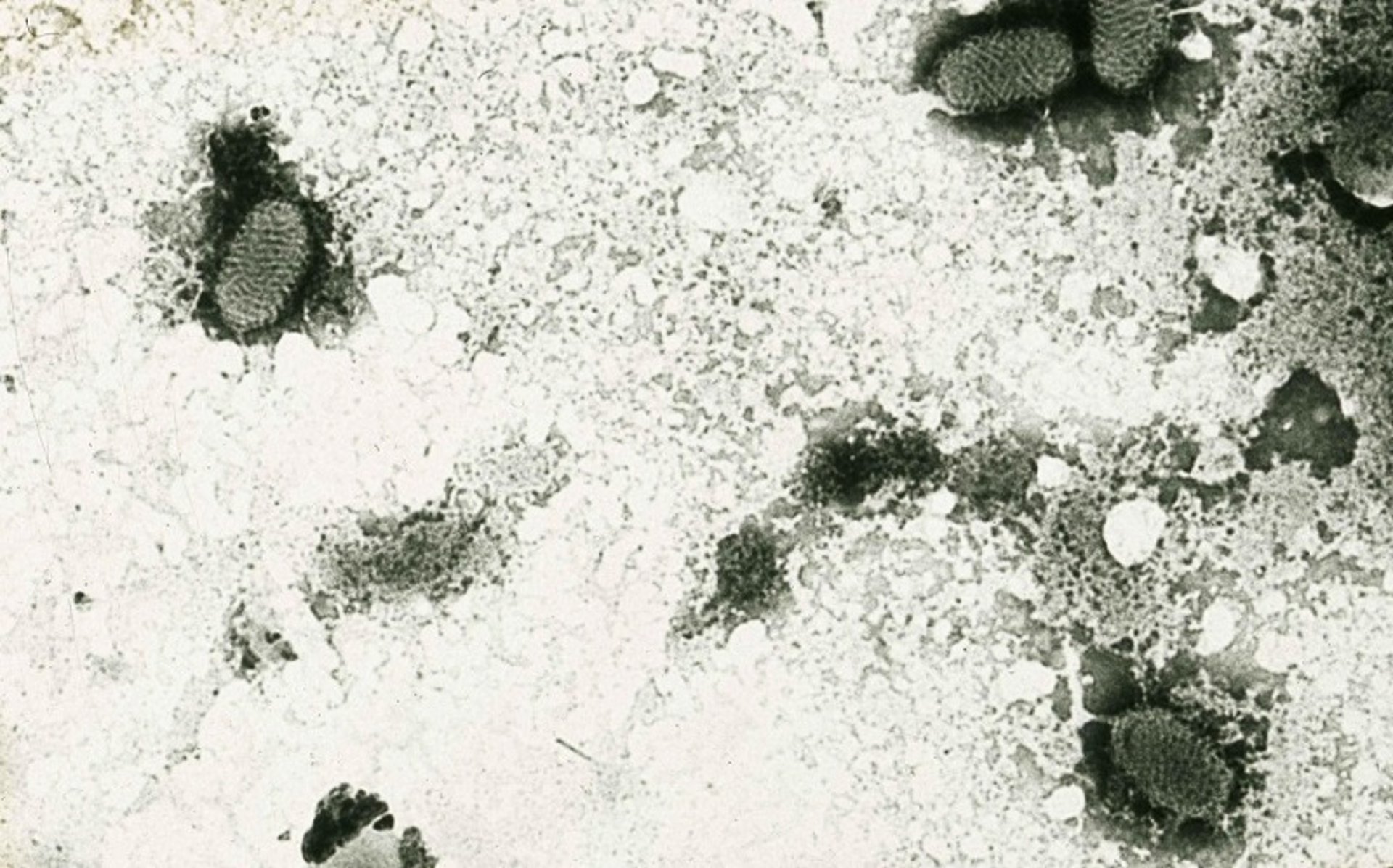Courtesy of Dr. Paul Gibbs.
Courtesy of Dr. Paul Gibbs.
Pseudocowpox, a common, mild infection of the udder and teats of cows, is caused by a parapoxvirus and occurs worldwide. The virus of pseudocowpox is related to those of contagious ecthyma and bovine papular stomatitis. These parapoxviruses differ morphologically from vaccinia virus and other poxviruses. They have a limited host range and cannot be propagated in fertile eggs; they will grow in some cell cultures, although relatively poorly.
Lesions of pseudocowpox begin as small, red papules on the teats or udder. These may be followed rapidly by scabbing, but small vesicles or pustules may develop before scabs form. Scabs may be abundant and can be removed without causing pain. Granulation occurs beneath the scabs, resulting in a raised lesion that heals from the center and leaves a characteristic horseshoe or circular ring of small scabs. This stage is reached in ~7–12 days. Some lesions persist for several months, giving the affected teats a rough feel and appearance, and more scabs may form (see associated photos, parts 2C and 2D). The infection spreads slowly throughout milking herds, and a variable percentage of cows shows lesions at any time. Cattle may become reinfected in subsequent lactations.
The scabbed lesions may be confused with mild traumatic injuries to the teats and udder. Scabs examined with an electron microscope frequently show characteristic virus particles.
Control of infection within a herd is difficult and depends essentially on hygienic measures, such as teat dipping, to destroy the virus and prevent transmission. Little immunity appears to develop.
People may become infected with painless, but itchy, purplish red nodules that are generally present on the fingers or hands. These lesions cause little disturbance and disappear after several weeks.




